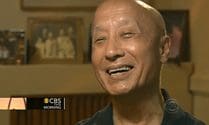In a career spanning six decades, ballet legend Finis Jhung has left his mark on Broadway, in film, and on stages across the world. While still a dancer, he studied with the greats—Valentina Pereyaslavec, Vera Volkova, Stanley Williams, Erik Bruhn, Rosella Hightower, and David Howard—and danced in the San Francisco Ballet, The Joffrey Ballet, and the Harkness Ballet. He danced for presidents and dignitaries and eventually founded and choreographed for his own ballet company. Now in the second phase of his career as a renowned and beloved dance instructor, Finis has taught everyone from prima ballerinas and Broadway stars to adult beginners. His goal is to make ballet accessible to everyone, to create innovative ways of teaching, and to inspire present and future generations of dancers. Not content with life in the studio, he has created more than 50 instructional dance videos, produced 18 music CDs, and authored The Finis Jhung Ballet Technique: A Guide for Teachers & Students—all so that aspiring dancers of every level can learn his techniques, without ever leaving home. In Ballet for Life: A Pictorial Memoir, he shares his own story for the first time, starting from humble roots in World War II Hawaii.
Still actively teaching at the age of 87, his greatest joy is helping students find their “inner dancer.”
About The Finis Jhung Ballet Technique
Finis Jhung Ballet Technique (FJBT) guides students to the essence of classical ballet. The approach is non-traditional in that it is not predicated on a narrow standard of bodily proportions or youth. Moreover, it does not ask for distortion of the limbs to the detriment of joint health. In its early years, FJBT helped professionals renovate their technique, building and elongating their careers. In the decades since, the approach has demonstrated success teaching innumerable beginners to dance.
FJBT arose from the rich history of the Harkness Ballet, and the advancements the company made to ballet training through movement analysis and application of the principles of kinesiology. Finis shares with his students mechanics related to him from Joanna Kneeland, a pioneer in this effort. In this way, his instruction resembles that of the master teacher David Howard, who successfully brought the Kneeland principles to Harkness company classes. Neither shying from controversy, both Howard and Jhung have helped countless dancers make sense of these anatomical and kinetic principles with their bodies, even when they contradicted some of the cherished beliefs passed on by the old school.
While not limited in use in Balanchine ballets, FJBT imparts to students the movement qualities that came to epitomize the American style in the 20th century, owing to the influence of George Balanchine. The fast pas-de-bourrée en avant to sous-sus, for example, is precisely the type of step one sees in Balanchine classics, but Finis breaks down the technique to its constituent parts for dancers of any skill level to practice and perfect. FJBT also employs the forward hip placement, over-crossed fifth position, outstretched preparatory lunges, high center of gravity, and audience spotting, all of which phenomenal Balanchine dancers use to great effect to move bigger and faster than the generations before.
FJBT also takes the best from the Danish School through direct influences by Erik Bruhn—one of ballet’s greatest stars, who mentored Finis—and renowned teachers like Vera Volkova and Stanley Williams. The way Finis shapes his hands and carries his wrists through the air is a distillation of Erik’s unmatched style. Pushing down through the foot into the floor to move the leg is a principle Madame Volkova bestowed upon Finis, and as such he uses his toes with purpose and precision. Stanley’s teaching was well known for containing little verbal explanation, but he imparted to dedicated attendees incredible finesse. FJBT reveals for students today the elegance and skill Finis extracted from Stanley. For example, students never see Finis hop up to demi-pointe or pull away from the floor. On the contrary, FJBT teaches dancers to perform relevés down, never losing the connection between the big toe and the ground. When the relevé turns, as it does in a pirouette, this approach is more beautiful and outcomes are more reliable than when dancers hop (or worse, climb) up to half toe.
A lifetime of hard work as a professional dancer and teacher has led Finis also to seek out the best practitioners of body care. The knowledge he has gained from them is also visible in his teaching, taking the form of restorative stretching and calm strength building. Through FJBT, dancers employ fundamentals with purpose: dancing from the ground up in relation to the floor, examining the order of operations in the body, and attending to the flow of breath. These efforts make dancing look and feel better for dancers of all skill levels.
Finis in the News




 Balanced Ballerinas on Finis Jhung’s Remarkable Life. Listen on Apple PodcastsListen on SpotifyRead the Post
Balanced Ballerinas on Finis Jhung’s Remarkable Life. Listen on Apple PodcastsListen on SpotifyRead the Post New York 1 Interviews Finis Jhung amid COVID-19 fears.Watch the Interview
New York 1 Interviews Finis Jhung amid COVID-19 fears.Watch the Interview Meet Finis. The Adult Ballet Collective Blog interviews Finis Jhung. Read the Interview
Meet Finis. The Adult Ballet Collective Blog interviews Finis Jhung. Read the Interview

5 STARS! “The beauty of the writing matches the beauty readers will encounter in the numerous images that fill the pages of this memoir. A delight to read.” by Romuald Dzemo Read the Review


Read the article


Read the interview























View PDF


May 1986
View PDF
